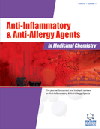
Full text loading...

Artificial intelligence (AI) is rapidly transforming biomedical research by offering advanced tools to analyse complex datasets. In the field of allergy studies, however, the translation of AI-generated insights into clinical practice remains limited and underutilised.
This review critically discussed the current applications of AI in allergy studies. It focuses on the methodological foundations of AI, including machine learning and clustering algorithms, and assesses their practical benefits and limitations. Representative case studies are explored to demonstrate real-world applications, and challenges in data quality, integration, and algorithmic fairness are examined.
AI techniques have shown promise in tasks such as disease phenotyping and patient stratification within allergy research. Case studies reveal that AI can uncover immunological insights and support precision medicine approaches. However, the field faces challenges, including fragmented data sources, algorithmic bias, and the limited presence of therapeutic AI tools in clinical practice.
Despite the demonstrated potential, several barriers hinder the broader adoption of AI in allergy care. These include the need for high-quality, standardised datasets, ethical oversight, and transparent methodologies. The review highlights the importance of these factors in ensuring the reliability, reproducibility, and equity of AI-driven interventions in allergy research.
AI holds significant promise for improving diagnostic accuracy and enabling personalised treatment strategies in allergy care. Realising its full potential will require robust frameworks, ethical governance, and interdisciplinary collaboration to overcome current limitations and drive clinical translation.

Article metrics loading...

Full text loading...
References


Data & Media loading...